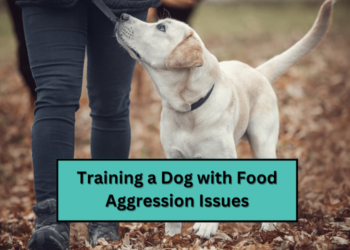Are you looking for a top dog training tips? On average, it takes about four to six months to train a puppy successfully, and a while longer for fully grown dogs. However, it all comes down to the reasons for training them.
Depending on your desired outcome, skill level, your dog’s age, and the time you’re going to invest, you should be sure to do it correctly to make it successful and effective. Here are the seven best dog training tips for successful and effective dog training.
7 Effective and Successful Dog Training Tips
1. Opt For An Ideal Name
If you brought your new puppy home, decide on an ideal name they’ll quickly respond to. Avoid using lengthy names with weak consonant endings or that don’t create emphasis when you call them. Choosing the perfect name goes a long way toward fostering better training than using dull appellatives that don’t grab their attention when you give them commands to do certain things. Try using a name with a hissing sound in the end, such as “Rex” or “Bess,” or those with solid consonant endings, including “Jack” or “Mark,” to capture their attention quickly.
If you just rescued your pooch from an abusive home, it’s good that you completely change their name to keep past traumatic experiences away. Giving them a new name signals a fresh start, primarily if you associate it with fun and lighter experiences. This way, you’ll be successful when training your dog.
2. Use Short Phrases For Commands and Instructions
Dogs respond faster to short word commands rather than long phrases and sentences. To make the training effective and successful, limit your instructions to single, assertive words such as “Sit,” “No,” and “Go.” Although dogs are dynamic and can follow instructions regardless of your words, it would be more effective and successful if you used short command terms. Besides, it would cost you less time and effort and minimise the hassle of training them
.
3. Train Your Dog In Different Environments

It will be demeaning if your dog behaves differently and against your expectations in different settings. Most dog owners dwell so much on in-house training that they forget about outdoor coaching, which defies the purpose of equipping dogs with all-around skills. Successful and effective dog training requires an all-inclusive approach and enables you to control them while in the house and outside.
Dogs can be edgy when outside because of people’s sight and unfamiliar things that don’t appear familiar, and they will bark and gnarl uncontrollably. Similarly, they can also be naughty and recalcitrant indoors if you don’t properly train them. Therefore, try to be all-round and vary your training milieus for effective and successful dog training.
4. Treat Your Dog In A Less Demeaning Way
Like humans, dogs are also prone to making mistakes, regardless of their age and level of maturity. Sometimes, dogs become hyperactive and do things in the house that can be annoying. Therefore, don’t go straight into yelling and scolding them, as this will make them edgy and fearful, and training them can be difficult. If you come home to a rumpled house, thanks to your pooch, don’t retort at them. Instead, be calm and devise a way to correct them and make them understand their mistake.
Leniency helps create an understanding and promotes a better relationship with your dog than aggressiveness would. This essential tip out of our seven best dog training tips for successful and effective dog training imprints an excellent picture of a caring and considerate owner in your dog’s mind. Consequently, training them can be successful and effective.
5. Use Positive Reinforcement
Dogs don’t respond well to aggressive treatment, and they’ll appear edgy and timid during training. Conversely, dogs take it well when you show them a smile and a caring face, along with great treats and fun. Positive reinforcement can be ideal for effective and successful training since it involves giving your dog a treat for doing something you want. These treats are traditionally in the form of tasty dog food or their favourite snacks, which they usually associate with an action.
However, be sure not to reward them with treats long after doing something desirable, as they won’t associate them with their actions. If possible, reward them two to three seconds after they do something that pleases you. Positive reinforcement is an ideal trick to train your dog effectively and successfully.
6. Don’t Overstretch Your Training
A pooch’s concentration span is usually limited, which can throw your dog’s mood into a tired, bored, and distracted state. It becomes challenging to train them in this state, as they’re unlikely to follow instructions and will be visibly defiant.
This dilemma can be frustrating to both you and your dog if training seems to stall at some point. Just because you have the time and your dog responds well to the training doesn’t mean you can overstretch the sessions. Instead, try limiting them to five or eight minutes tops. Short training sessions that are widely distanced during the day or done once every day are more effective than longer sessions.
5 Fun Indoor Dog Games. Watch This Video!
7. Get Some Little Training Yourself
You won’t understand the best way to treat your dog or how to make training sessions effective if you don’t understand dogs’ general temperament. It will help if you’re cognizant of the overall canine body language to enable you to quickly tell if they’re excited, bored, or about to switch off from training sessions. Since dogs don’t have verbal communication prowess, they use their wagging tails, eyes, and body movements to relay messages that express their concerns and wishes to humans.
Understanding the canine body language puts you in an excellent position to know them better. Besides, canine language helps you gauge your dog’s mood in training so that the sessions become more productive, successful, and effective.
Troubleshooting Common Training Challenges
Even when armed with the best training tips, you’re likely to encounter some challenges along the way. Here, we’ll address some common problems you might face while training your dog and offer practical solutions to keep the process both effective and successful.
1. Your Dog Isn’t Paying Attention
Solution: To keep your dog focused during training sessions, minimize distractions. Choose a quiet, enclosed space to train and make sure you have your dog’s favorite treats or toys as a reward.
2. Inconsistent Commands
Solution: Consistency is essential for effective training. Make sure that everyone in the household is using the same commands and offering the same rewards for each desired behavior. Write down the commands and rules to ensure everyone is on the same page.
3. Poor Recall
Solution: If your dog isn’t coming when called, go back to basics and train this command in a controlled environment. Use a long leash if you need to, and practice, practice, practice. Gradually move to areas with more distractions to test the skill.
4. Leash Pulling
Solution: Use a no-pull harness and practice the “heel” command. Start by walking in a straight line in a low-distraction environment. If your dog pulls, stop and wait for him to return to your side before continuing.
5. Jumping Up on People
Solution: Teach your dog an alternative behavior, such as sitting, which can be rewarded. Keep treats handy to reward the desired behavior and ignore or turn away from your dog when he jumps up.
6. Separation Anxiety
Solution: Gradually acclimate your dog to being alone. Start with short absences and gradually extend the time you are away. Also, consider leaving some comforting toys or clothes with your scent on them.
7. Excessive Barking
Solution: Determine the cause of the barking, such as boredom, attention-seeking, or fear. Once you’ve identified the reason, you can work on addressing the root cause, possibly with the help of a professional trainer.
8. Aggression Toward Other Dogs
Solution: This is a complex issue that often requires professional intervention. A general tip is to slowly desensitize your dog to other canines under controlled circumstances and consult a behaviorist for a tailored solution.
These are just a few of the most common training challenges you may encounter. By taking a proactive approach and staying consistent, you can troubleshoot these issues and ensure that your dog training is both effective and successful.
Conclusion
Dogs are adaptable and highly dynamic dogs and are also trainable regardless of their stage of development or level of maturity. But before embarking on
some training sessions require that you understand how to do them to make them fruitful. Being mindful of their canine language is key to understanding their mood and temperament and helps you focus on the essential aspects that make your dog training successful.
We hope these 7 top dog training tips for successful and effective dog training will help mold your little friend to the character you desire. Good luck!
Recommended Readings:

























Discussion about this post